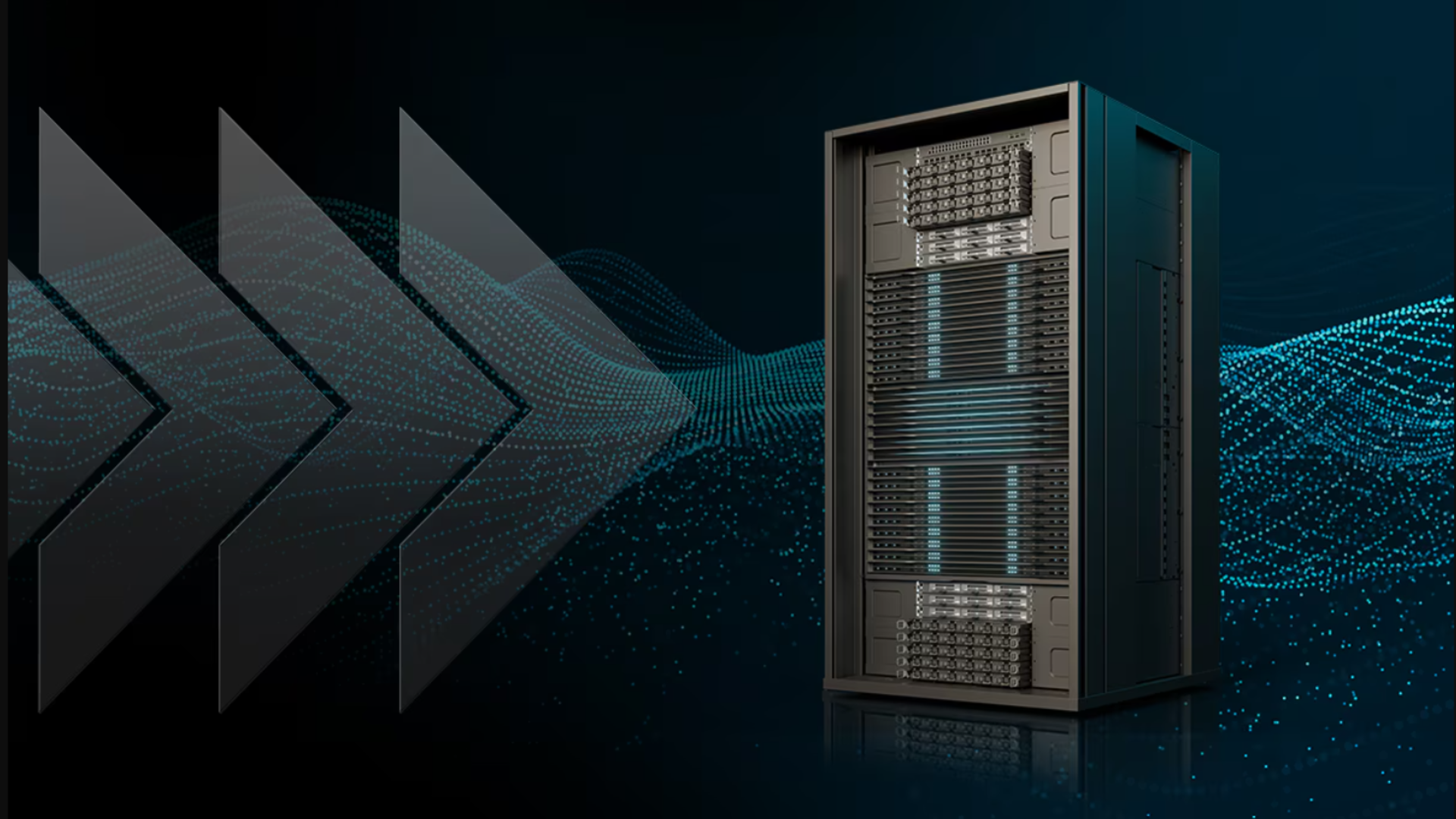AMD embraces Meta-backed Open Rack Wide form factor with new MI450-powered Helios racks - Oracle is the first big client with a 50,000 GPU commitment, with more to come
Projected 1.4 exaFLOPS shows Helios targets massive AI compute power

- Meta’s ORW design sets a new direction for data center openness
- AMD pushes silicon-to-rack openness, though industry neutrality remains uncertain
- Liquid cooling and Ethernet fabric highlight the system’s serviceability focus
At the recent 2025 Open Compute Project (OCP) Global Summit in San Jose, AMD presented its “Helios” rack-scale platform, built on Meta’s newly introduced Open Rack Wide (ORW) standard.
The design was described as an open, double-wide framework that aims to improve power efficiency, cooling, and serviceability for artificial intelligence systems.
AMD positions “Helios” as a major step toward open and interoperable data center infrastructure, but how much this openness translates into practical industry-wide adoption remains to be seen.
Meta’s role in shaping the new rack design
Meta contributed the ORW specification to the OCP community, describing it as a foundation for large-scale AI data centers.
The new form factor was developed to address the growing demand for standardized hardware architectures.
AMD’s “Helios” appears to serve as a test case for this concept, blending Meta’s open-rack principles with AMD’s own hardware.
This collaboration signals a move away from proprietary systems, although reliance on major players like Meta raises questions about the standard’s neutrality and accessibility.
Sign up to the TechRadar Pro newsletter to get all the top news, opinion, features and guidance your business needs to succeed!
The “Helios” system is powered by AMD Instinct MI450 GPUs based on the CDNA architecture, alongside EPYC CPUs and Pensando networking.
Each MI450 reportedly offers up to 432GB of high-bandwidth memory and 19.6TB/s of bandwidth, providing capacity for data-hungry AI tools.
At full scale, a “Helios” rack equipped with 72 of these GPUs is projected to reach 1.4 exaFLOPS in FP8 and 2.9 exaFLOPS in FP4 precision, supported by 31TB of HBM4 memory and 1.4PB/s of total bandwidth.
It also provides up to 260TB/s of internal interconnect throughput and 43TB/s of Ethernet-based scaling capacity.
AMD estimates up to 17.9 times higher performance than its previous generation and roughly 50% greater memory capacity and bandwidth than Nvidia’s Vera Rubin system.
AMD claims this represents a leap in capacity for AI training and inference, yet these are engineering estimates and not field results.
The rack’s open design incorporates OCP DC-MHS, UALink, and Ultra Ethernet Consortium frameworks, allowing for both scale-up and scale-out deployment.
It also includes liquid cooling and standards-based Ethernet for reliability.
The “Helios” design extends the company’s push for openness from chip to rack level, and Oracle’s early commitment to deploy 50,000 AMD GPUs suggests commercial interest.
Yet broad ecosystem support will determine whether “Helios” becomes a shared industry standard or remains another branded interpretation of open infrastructure.
As AMD targets 2026 for volume rollout, the degree to which competitors and partners adopt ORW will reveal whether openness in AI hardware can move beyond concept to genuine practice.
“Open collaboration is key to scaling AI efficiently,” said Forrest Norrod, executive vice president and general manager, Data Center Solutions Group, AMD.
“With ‘Helios,’ we’re turning open standards into real, deployable systems - combining AMD Instinct GPUs, EPYC CPUs, and open fabrics to give the industry a flexible, high-performance platform built for the next generation of AI workloads.”
Follow TechRadar on Google News and add us as a preferred source to get our expert news, reviews, and opinion in your feeds. Make sure to click the Follow button!
And of course you can also follow TechRadar on TikTok for news, reviews, unboxings in video form, and get regular updates from us on WhatsApp too.
You might also like
- Oracle unveiled the “largest AI supercomputer in the world” – and it really is huge
- We've listed the best cloud hosting providers
- Check out the best AI tools and best AI writers

Efosa has been writing about technology for over 7 years, initially driven by curiosity but now fueled by a strong passion for the field. He holds both a Master's and a PhD in sciences, which provided him with a solid foundation in analytical thinking.
You must confirm your public display name before commenting
Please logout and then login again, you will then be prompted to enter your display name.